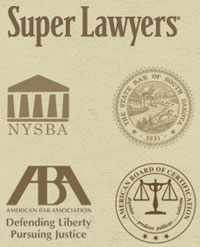Most things in life are not free, but use and enjoyment of lakes, rivers, and streams in South Dakota often are. In South Dakota, water resources are held in trust by the state for all its citizenry. The SD Department of Environment and Natural Resources regulates water use and makes sure that uses conform to the public interest.
Stemming from South Dakota’s sovereign authority and codified by statute, the public has a right to recreationally use water (like the kayakers pictured above on Split Rock Creek, pictured in SimplySouthDakota.com) when that use conforms to “public purposes.” Public purposes are defined as boating, fishing, swimming, hunting, skating, picnicking, and similar activities.
Free use of public bodies is extended to the underlying bed (including dry bed) between the Ordinary High Water Mark and the Ordinary Low Water Mark, so long as the overlying water body is capable of recreational use. For navigable rivers and lakes, free use extends 50 feet landward from the Low Water Mark, so long as the distance does not extend past the High Water Mark.
The unique space between the High Water Mark and Low Water Mark also serves as a “right-of-way” when a publically managed water body is used for public purposes. It is prudent for those using the water to have an understanding of the law to avoid trespassing on private land.
The ownership of land grants the owner a bundle of rights, which include the right to defend privately owned property from trespassers. But even private land may be encumbered for the use of “public rights.” For instance, South Dakotans have a right to travel on public highways, including section lines that divide plats of land. Section lines are an example of a public right-of-way which the public is free to use without the permission of a private landowner.
Similarly, navigable and other non-navigable waters are considered public highways under South Dakota law. Rivers that are described as navigable under federal law are considered the same under South Dakota law. Federal law defines navigable waters as waters of the United States that were historically used to facilitate interstate commerce.
Yet the state holds all waters, outside of Indian Country, in trust for the benefit of the public but not as an owner or proprietor. The people of the State own the waters but not in the exclusive or absolute sense.
This water right-of-way is not limitless. In South Dakota, riparian (adjacent) landowners own the land down to the Low Water Mark. Recreational users of water for public purposes however can use land located between the High and Low Water Mark via this right-of-way. It is unlawful for a riparian owner to interfere with the water right-of-way between the High and Low Water Mark, even if the landowner is under the false-but-reasonable belief that the public is trespassing.
This prohibition includes the use of livestock fences that keep non-owners off the waterway. Fences across navigable streams must have a 6 foot high by 6 foot wide gate or they are unlawful. Federal navigable waters like the Missouri River are not allowed to be fenced off, regardless of the presence of a gate.
How do recreational users access public water when a landowner owns the submerged land up to the low water mark? Public ownership of the water body and the accompanying right-of-way does not create an automatic easement to access the public water. The water right-of-way only applies to the space between the High and Low Mark.
However, a limited right to portage exists in South Dakota. Portage refers to the carrying of boats and supplies overland between two waterways or around an obstacle to navigation. The term can also refer to the route by which a user of the waterway accomplishes this task.
We will here not talk about how I might have accessed water during my youth. The “statute of limitations” immunizes any conceivable transgression on that score. A fellow can never be clever enough to buy back his past. When public water has no access point, the state of the law can make access functionally impossible because there is no law that gives universal access “down to the water” if this entails trespass over private land.
The law is not like a snowplow on a truck. The snowplow on the highway department truck is supposed to be proactive and in front of a problem trying to make things right. The law is an after-the-fact remedy which sometimes fixes the issue at hand.
Water law is like the Missouri River before the dams were put in. It meanders all over the place over time.
David Ganje of Ganje Law Office practices in the area of natural resources, environmental and commercial law. The website is Lexenergy.net





